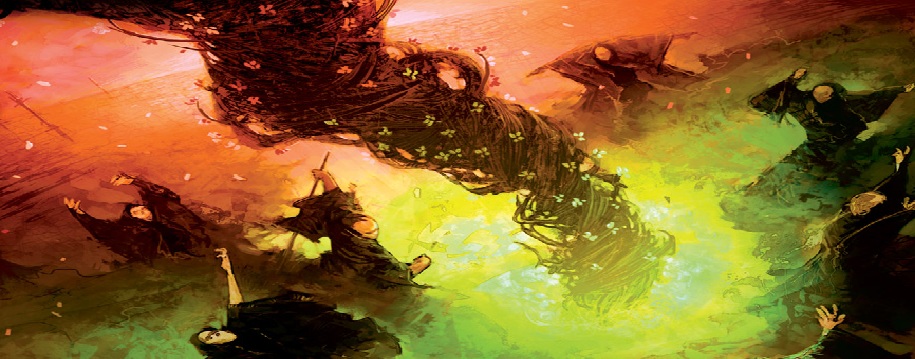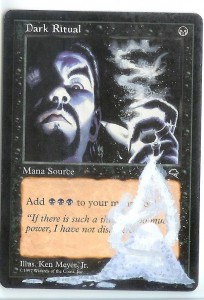Are you a Quiet Speculation member?
If not, now is a perfect time to join up! Our powerful tools, breaking-news analysis, and exclusive Discord channel will make sure you stay up to date and ahead of the curve.
Due to my brother's wedding in New Jersey this past weekend, I was unable to get any kind of a project in time for this article. That doesn't mean that there isn’t anything to learn though, so definitely keep reading (at least to the bottom for important announcements). Aside from welcoming my new sister to the family, the most important thing that Jersey did was remind me of an article that I have been meaning to write for a while now, an article about accents.
Whaddya talkin' about?
Yes, it's a bit of a stretch to link different dialects to accent painting so I'll give that up right here. Accent painting is a a very useful type of alter. It finds its' niche among newer players and more casual players as often times it allows the text of the card to remain visible. It can also be very quick in terms of time spent painting as well as create a very unique artistic effect.
Accents need not be very prominent. Their job is ultimately to make the viewer (at the very least) do a double-take when looking at a card. Many times an accent is just a continuation of the ideas presented in the original art, as seen in this (over used) Dark Ritual of mine. I looked at the art and asked where the dust was coming from, and then answered my question by painting a source. If that seems like a simple process it is, but as you can see it can create a very powerful effect without a lot of effort.
Accents can also be used in conjunction with border-less alters. You can liken this to putting icing on a cake. It helps the design to stand out from other border-less alters, and is a great way to put your own bit of flair into the design, which will help you stand out as an artist. When the colors of an altered card are rather bland, I often use an accent to add a certain amount of pop to the alter to keep it from being to boring.
Accents do not need to be a continuation of the art though. You may use them to express your own separate ideas about the content. Droplets of blood on a vampire card is a decent use of the myths and legends that surround these creatures and ideas. I have seen more literal ideas used though, like painting a black lotus on to a Trinket Mage or even adding Progenitus to a Natural Order. The important thing to take away from this is to use your imagination, and not limit yourself to what the artist gives you.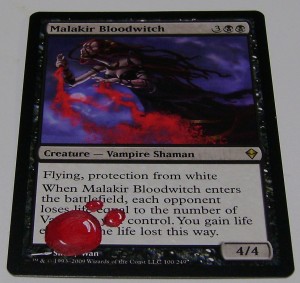
The most prominent use of accent work is on foil cards though. Foils are a unique challenge in their own right as they do not hold paint as well as their plainer non-foil cousins. Foils also happen to be, well, shiny. This very obvious quality eliminates the idea of any full art or border-less alters unless you have a way to make your paint appear as glossy as the foil itself. Otherwise, you just end up advertising where you painted on the card and more importantly where you “fudged”, which would be like the magician revealing where the rabbit is before he pulls it from the hat. Accents allow you to enhance the appearance, and if done carefully, allows you to do so without drawing to much attention to the alter itself.
We will cover more about foils next week when we paint one, but first a little fire side chat, just my readers and myself.
Fire side WHAT?
I like to pride myself on being honest and open with my readers. If you send me a scan of your work, I give honest criticisms if they are warranted, and in equal measure honest praise. I was honest with you when I confessed that my TARDIS was not my best work, and a few of you have returned the favor by sending honest criticisms back to me, be they on the topic of my articles and painting or even my Twitter icon. It is a trait I value, and in keeping with that ideal I feel I must share a growing thought with you. It is rapidly growing apparent to me that I have taught you most of everything I know about altering cards. This is not to say that the end of this article series is near. I will continue to provide you with insight into the hobby to the best of my ability. I just wanted to make you aware that from this 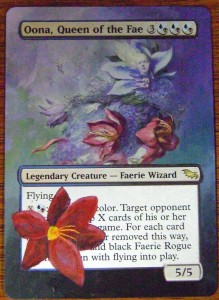 point forward, when I learn something new, or try a new method, you will be the first to know. You will (hopefully) be learning alongside me and growing together with me in this hobby. To that end, I would like to announce that I will be taking open submissions on the subject of altering cards.
point forward, when I learn something new, or try a new method, you will be the first to know. You will (hopefully) be learning alongside me and growing together with me in this hobby. To that end, I would like to announce that I will be taking open submissions on the subject of altering cards.
If you have been experimenting and practicing as I have advocated these past months, then you will have invariably stumbled upon a unique method of doing things. This is your chance to share that information with the community. I will of course continue to provide an article each week, so please do not think that I'm asking my readers to do my work for me. Instead, I envision this article series to become more of a community blog, a resource where beginners and experts alike can come for answers to their altering questions. Much like a medical journal keeps up with the latest advances in medical science, this series should note any advances in painting theory and technique.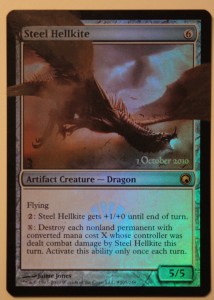
All serious submissions will be read by me, and if I feel they are appropriate to what we are trying to accomplish than they will find their way into the article, with as much credit given to the author as they are comfortable with. If you don't fancy yourself a writer, just get your ideas down into an email and we can work together on finding the perfect words to express your thoughts. The idea of growing this community is one that is exciting to me, and I hope this will be a strong step towards doing just that.
Now if you don’t care about all that crap then tune in next week for a raffle prize and a workshop on how to paint foils.
-The Painters Servant
Twitter: PaintersServant
Email: Mbajorek02@gmail.com


